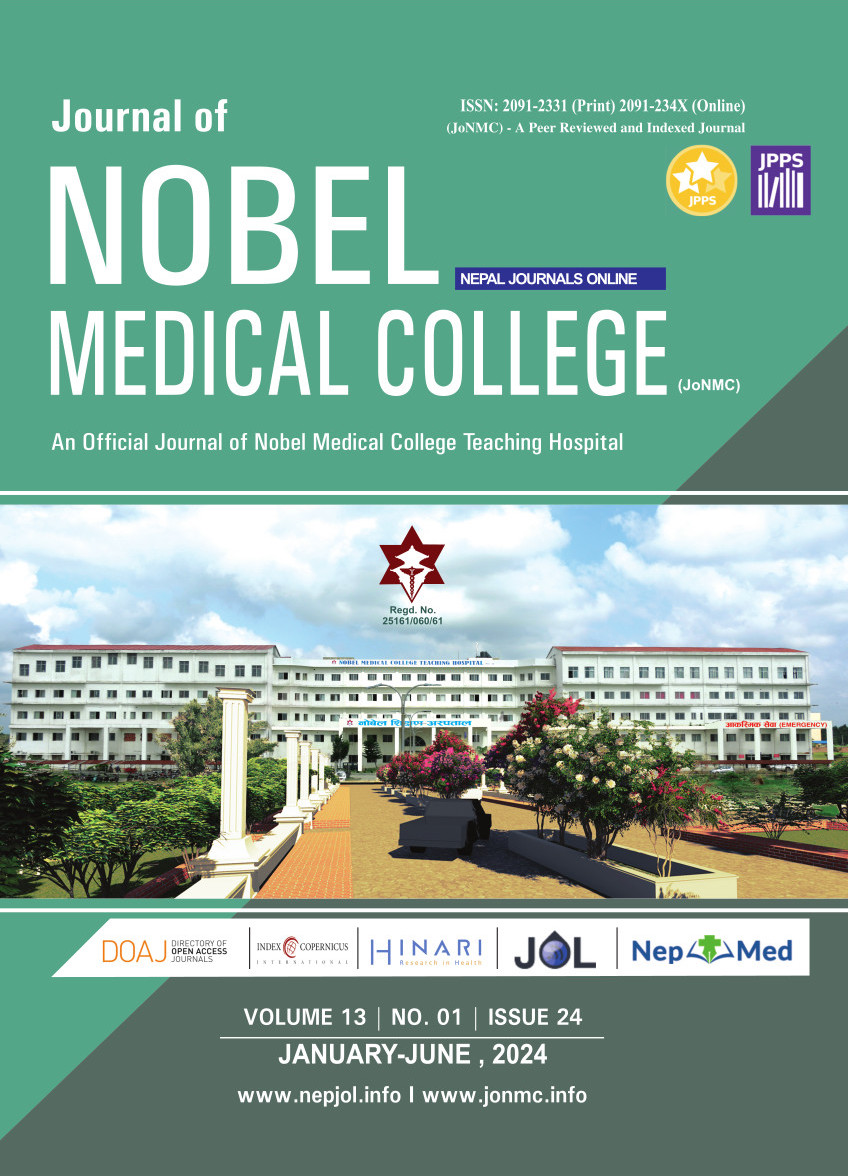Study of Anatomical Variation of Intrahepatic Biliary Tree by Magnetic Resonance Cholangiopancreatography in Patients Attending Tertiary Hospital of Eastern Nepal
DOI:
https://doi.org/10.3126/jonmc.v13i1.68098Keywords:
Anatomic variation, Intrahepatic bile ducts, Magnetic Resonance cholangiopancreatographyAbstract
Background: There are several variations in the complex anatomy of intrahepatic bile ducts. Magnetic resonance cholangiopancreatographyis a safer imaging modality that effectively shows these variations, aiding in surgical planning and preventing iatrogenic injuries. This study aims to evaluate these anatomical variations using magnetic resonance cholangiopancreatography.
Materials and Methods: This cross-sectional prospective study was performed in the Radiology Department of Nobel Medical College for one year using a convenient sampling technique. A total of 165 cases meeting the inclusion criteriawere selected and magnetic resonance cholangiopancreatography was performed to evaluate the anatomical variations.
Results: The mean age of patients was 34.32±10.22 years out of which 51.5%were male and 48.5%were female. The branching pattern of right hepatic duct was typical in 66.7% of cases. The right posterior sectoral duct joining left hepatic duct was the most common variation seen in 15.2%. Right posterior sectoral duct joining the common bile duct was present in 6.7%. 6.1% of cases had unclassified variation whereas a trifurcation pattern was found in 5.5%. Left hepatic duct showed the typical branching pattern in 70.9% of cases. Segment II duct draining into the common trunk of segments III and IV was seen in 20%. Triconfluence among segments II, III, and IV was seen in 8.5% and 0.6% of cases had unclassified variation.
Conclusion: This study revealed wide variation in branching patterns of intrahepatic biliary ducts. The typical branching pattern of right and left hepatic ducts were seen in majority of cases.
Downloads
Downloads
Published
How to Cite
Issue
Section
License

This work is licensed under a Creative Commons Attribution 4.0 International License.
JoNMC applies the Creative Commons Attribution (CC BY) license to works we publish. Under this license, authors retain ownership of the copyright for their content, but they allow anyone to download, reuse, reprint, modify, distribute and/or copy the content as long as the original authors and source are cited.




